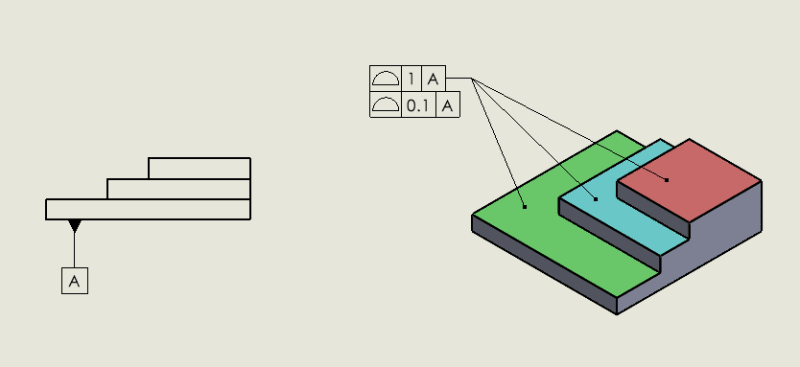We have a customer who has put a feature control frame with multiple leaders, pointing to 3 parallel planes. The feature control frame has 3 leaders, pointing to the 3 planes. The tolerance in the feature control frame is an angularity tolerance. It is my understanding that the 3 planes should be treated as one feature, which should be aligned with the datum within the specified tolerance. Is this correct?
Can anyone point me towards some literature on this subject? I haven't figured out a way to measure this with my CMM (Verisurf) - maybe if I know the correct verbiage for this scenario google with help me find a way to do it in Verisurf. (See attached example)
Can anyone point me towards some literature on this subject? I haven't figured out a way to measure this with my CMM (Verisurf) - maybe if I know the correct verbiage for this scenario google with help me find a way to do it in Verisurf. (See attached example)

